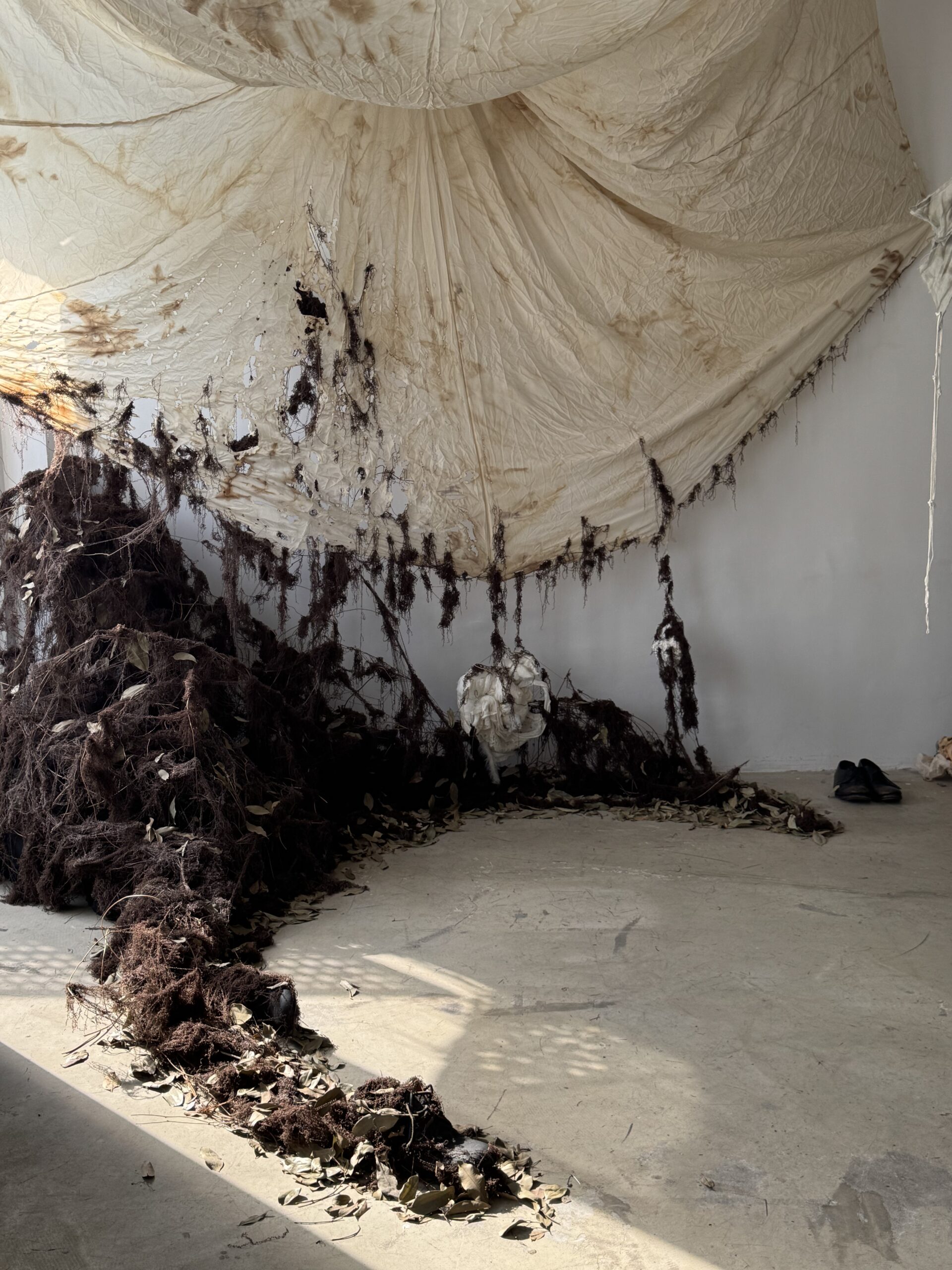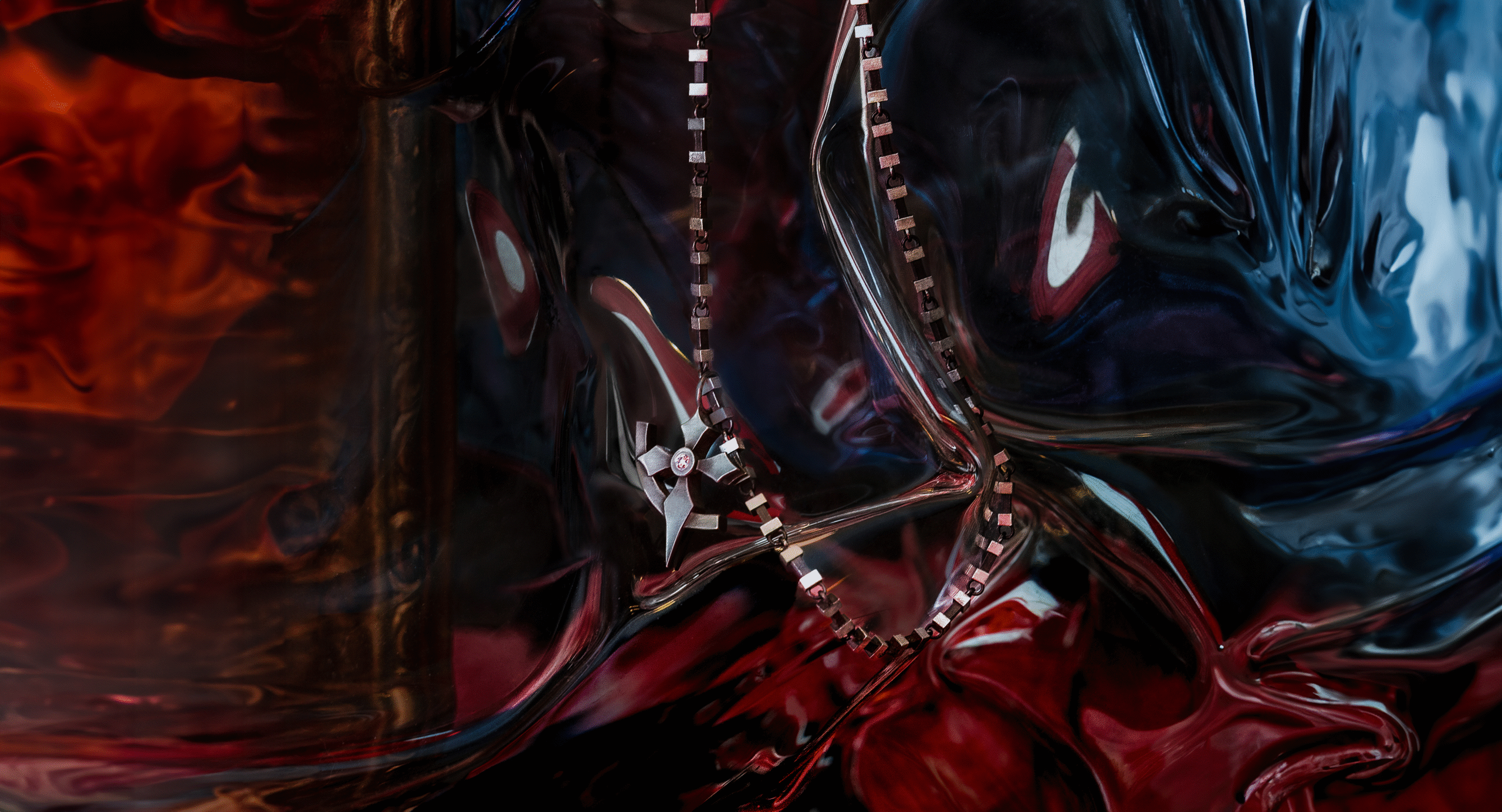
Introduction
Among all the distinctive designers in the fashion industry, aside from the one who was once known for his style label and often referred to as “the most copied designer,” Rick Owens, Boris Bidjan Saberi (born September 11, 1978, full name Boris Bidjan Saberi Moghaddam Teherani) also has a unique soul that deserves more recognition.
Born in Germany to Persian descent and rooted in Barcelona, he is one of the few official Paris Fashion Week designers in the avant-garde fashion circle. The raw, single-material textures, cold-cut line contours, and unique pairing methods give his work a strong sense of identity.
In his world of creativity, shaped by the fusion of multiple cultures, his influence extends beyond fashion to include a specific lifestyle, cultural beliefs, and aesthetics. As the designer’s career has continuously evolved, adhering to the principle of changing every two years, I present here an updated version of the most complete guide to exploring the fascinating world of Boris Bidjan Saberi, version 1.11.

Boris Bidjan Saberi:
“I can’t talk about a specific ‘highlight’. Because although I always continue the coherence of each season with the same sensitivity and involvement, every season’s design is different. I see my work as a continuous ‘evolution’, and with each passing season, I delve deeper into areas worth exploring.”
A: Avant-Garde
What is avant-garde? Or, what is the difference between dark (see “D”) and avant-garde?
In recent years, there have been many versions that are generally similar but with subtle differences, usually revolving around extreme materials, a gloomy tone, a tendency towards escapism, and opposition to mainstream culture. But first, it’s important to understand that these terms do not have an authoritative definition in fashion. Some people just identify the common points among brands with distinct personal styles. Everyone is different. You may think Rick Owens isn’t avant-garde, you could measure avant-garde based on the level of commercialization, or even use whether black, white, and gray are commonly used as a dividing line between dark and avant-garde (although that’s quite absurd).
“I don’t consider myself an avant-garde designer,” Saberi said in an interview with fashion media Le Paradox. “I just feel unsettled by the current state of things, because this society is full of sickness and abnormalities. To some extent, I fight against it with my creative work. Clothes should have a meaning that expresses personal identity and behavior. I believe all creative workers in the world should stand firm in their position, focus on the art itself, and refuse to take shortcuts.”
B:Barcelona

Barcelona is the current headquarters of Boris Bidjan Saberi and also the place where his dreams began. In his youth, Saberi studied fashion design and tailoring here.
After graduating in 2006, he participated in the government-supported 080 Barcelona Fashion project and held his first Boris Bidjan Saberi runway show during that season’s fashion week. He chose an 18th-century textile factory in the suburbs and converted it into his studio. Even though he is now a popular highlight at Paris Fashion Week (see “V”), he has no plans to move his studio to Paris. In fact, Saberi’s first studio was not in Barcelona, but in Monistrol, located at Montserrat, which the local Catalans consider a “holy mountain.”

As the scale expanded and the issue of employees commuting to and from the suburbs daily became more prominent, Saberi followed the principle of being close to the city with ample space. In April 2016, after New York (see “N”), Boris Bidjan Saberi’s second official flagship store opened in the Poblenou industrial district, once a textile hub in Barcelona (which he refers to as the local ‘Detroit’), nestled among a cluster of abandoned factories and warehouses.
The store features steel and concrete decor, with no lighting equipment other than natural light, and plays old-school hip-hop on a loop—a signature Saberi style. It also serves as an archive: in addition to the iconic silver asphalt leather jackets, it showcases key works from each season and unreleased samples.
‘This is about the memories of my generation. My culture blends German, Persian, hip-hop, and skateboarding, and this store reflects that. It’s a combination of craftsmanship and origins, applied to shape, texture, light, and scent,’ Saberi mentioned on the opening day. ‘Ultimately, this store carries the marks of the brand’s journey and reflects the story behind it.’ Working in the city where he grew up, Saberi surely feels fortunate.
C: Carol Christian Poell
(CCP needs no further introduction)
Just as 2Pac and Biggie are to rap, and Michael Jackson and Prince are to pop, Carol Christian Poell and Maurizio Altieri’s status in the avant-garde scene is unquestionable. Each has their own unique contributions, and there is no need to rank them.
From gloves that connect the ring and pinky fingers to nearly identical woven garments, Boris Bidjan Saberi’s ‘homage’ to these two masters has been a subject of discussion for a while. On StyleZeitgeist (SZ), a forum affiliated with the fashion media SZ-Mag, people have questioned Saberi’s capabilities based on these points, only to be rebutted by the forum’s experts using the following image.

This is bullshit, soon you’ll be convinced that Poell invented all clothing.” This is the view of SZ founder Eugene Rabkin (SZ ID: Faust). Poell’s many innovative ideas are not without source; he elevated existing concepts and gave them his own aesthetic.
As mentioned in The Radicalism of Fashion — Boris Bidjan Saberi: “In fact, any form of creation cannot exist without a foundation of knowledge. The basis of creation is absorption and reference. Creators usually need to digest what they see, hear, and even touch, interpret it, and elevate it. The difference between reference and plagiarism lies in the fact that reference reveals the true character and personal emotions of the creator. Great works often convey the creator’s thoughts and meanings more directly, inviting deeper exploration rather than just superficial visual appearance.”
In the rap world, even legends like Eminem had their first album Infinite criticized as “clumsy imitation” of East Coast giants Nas and AZ, but that did not stop him from staying true to himself and eventually becoming a legend. In Boris Bidjan Saberi’s entire 11-season collection, the spring-summer season ended with transparent leather garments, while the autumn-winter season opened with transparent leather dyed in bright red (see “D”). Although transparent leather was invented by Poell, the unique dyeing technique used by Saberi is his own. Isn’t that also an elevation?
And… Carpenter.

Would Saberi ever consider giving up fashion?
In his view, if one day he feels that he’s no longer supported, it would mean the loss of the creative spirit, or if the way the fashion industry operates destroys his vision and the soul of his brand, he would give up out of boredom and rather start something different. Rick Owens’ numerous leather biker jackets and boots make him look like someone who would become a motorcyclist (although he himself doesn’t think so). So, if Saberi weren’t a designer, what would he do? The answer might be a carpenter.
He once said in an interview: “Maybe I’m more like a carpenter than a designer. My aesthetic and feel for clothing are a reflection of how I live. There’s a sense of beauty flowing through my veins. For me, I inherited this from my mother, from the tactile feel of fabric to the appearance of details. I also have a German sense: I only like and only want to do things with perfect structure. My job is to find the perfect match in a smart, impossible overall pattern. My vision comes from the things I’ve learned in life and my social interactions.”
There’s actually another, more “German” version of the answer car engineer the German automotive industry is advanced enough to not need further elaboration. “I believe that only by finding your own path can you feel good. Luckily, I found my own path, and I doubt whether I would be able to work well in the automotive industry. One day, I will design a car.”

Whether as a carpenter, car designer, or in any other industry, he would undoubtedly approach his work with the value of “uniqueness and meticulous craftsmanship” a value closely associated with his current brand. As designer Tobias Birk Nielsen (who served as Boris Bidjan Saberi’s junior design assistant) understands him: “What I want to say is that he is known for his incredible focus, unique craftsmanship, skills, and structural language.
But most importantly, he always places quality and craftsmanship first, and he understands very well what is best from a production perspective this is something I really admire about him. It is this doubled effort that has made him stand out and gain twice the reward. He has truly created a lasting personal signature that is highly recognizable.”
D:Dyeing

Vogue Runway once described Saberi in a show review: “Every day is only about dyeing, dyeing, and more dyeing.” He has an almost obsessive love for dyeing, and he takes great pleasure in it, even when it comes to design itself.
In the Fall/Winter 2011 season, the biggest challenge was dyeing the transparent leather, because even if the dyeing was successful, the subsequent color fixing was another difficulty. To solve this, he painstakingly developed a technique of “hand-dyeing first, then washing to age the material.”
As for the inspiration behind the colors, they range from the healing process of a wound and blood coagulation “changing from red to black” in the Fall/Winter 2011 collection, to the rust-like “brown with yellow” metallic oxidation in the Spring/Summer 2017 collection, and to the copper oxide forming a near Tiffany blue color in the Fall/Winter 2019 collection. Even though each season has a single color theme, there are various nuances, which come from his careful observations of life and attention to design (though he humorously describes these observations as being “bored”).
Some fabrics, unlike genuine leather, are not suitable for direct blood-staining. To show different textures within the same color scheme, he selects different shades that represent the stages of blood changing “from red to black” and repeats the dyeing process to observe the changes. He then reproduces the color schemes in the final product using pigments.
Compared to his “fashion icon” Rick Owens, Saberi rarely does media interviews, and most interview videos focus on showing his daily life in the studio (such as in the video shoot with Some/Things).
In an interview with Nabil Azadi, Saberi particularly agreed with the description of himself “coming in with a bucket of oil and tools to dismantle a jacket.”
“No matter what, I stick to designing,” he said. “We all hand-dye, and the product must spark a revolution! I want to make the best thing in the store, it’s a mission. Not only because you have to constantly innovate and completely improve your way of working, but because I know how to make high-end products. I want the most avant-garde style to be reflected in every structure of our products, and we will definitely achieve it!”
And also… Dark

“I use a lot of black because it matches my skin tone and feels very comfortable to me.” Saberi’s love for black stems from the power, emotion, and lifestyle it represents, making him feel at ease. “I’m known for black, but I don’t really know why that is.” This is a question many avant-garde designers, including Saberi, face.
Indeed, black is the best color to create a gloomy atmosphere, but does it always have to be black?
“As a color, I like black, or rather, non-colors, because my designs initially had no color. Only when I have time do I add another color (as a seasonal theme color).”
In the SS11 season, he particularly focused on the treatment of black and varying shades of gray, and the recently released SS19 season was also one of the rare non-color seasons all pieces were based on black, white, and gray. In fact, Saberi, often associated with black, has over the years created a “rainbow” of colors.
“At first, this troubled me because I just wanted to do something that didn’t exist before.” At the same time, due to the dark tones and rough features, the brand is often compared to brands like Damir Doma (Saberi’s Munich friend), Rick Owens, Julius_7, and others.
For Saberi, being labeled as a “dark brand” is just a way of showcasing different versions of themselves in the same manner. He himself questions the validity of the “dark” label. “To be honest, I don’t know what people mean by ‘dark aesthetics.’ If it simply means a love for black, then I am definitely part of that aesthetic, but personally, I wouldn’t use that word to define my work. I’m not ‘goth’ or ‘dark.’”
Of course, the current situation is: Damir Doma’s positioning has always been as a mainstream fashion house, so it quickly adapted to market trends; Julius-7 shifted from youth culture to Cyberpunk two years ago, but has yet to stabilize; Rick Owens’ previously religious monochrome style has become increasingly eccentric and colorful.
E:Eleven(11)

Numbers are not just expressions of quantity, but a form of intellectual power, each carrying its own distinct meaning. For Saberi, who focuses on numerical symbolism, the number 11 is like a “coat” with special profound significance: tattoos on his body (see “K”), the meaning of his main logo, his birthdate, lucky number, and so on.
In 2011, Saberi held an exhibition named “11” in the basement of the Hotel Mitte in Berlin. In the dimly lit space, 11 masked individuals guided visitors through the dark hallways. Under 11 cones of light, 11 iconic pieces from previous seasons hung from the ceiling: jackets, pants, shoes, creating a ghostly, eerie scene. Suddenly, a DJ, beatboxers, and drummers broke the silence, and two dancers fully dressed in BBS outfits performed breaking on stage, showcasing an authentic underground vibe.
Fate played its part: the transformed Spring/Summer 2013 collection (see “Q”) happened to be Saberi’s 11th season of ready-to-wear.
And… 11 (Eleven) by BBS

Around 2012, Rick Owens significantly expanded his commercial path, becoming a style label. Facing the overwhelming influence of the “RO style,” he sought to promote his ideas while also achieving fame and fortune. Boris Bidjan Saberi took a different approach, and in 2012, he strategically made a landmark move launching the sub-line 11 by BBS (abbreviated as 11), a collaboration project with the Inditex Group (which owns several fast fashion brands, the most famous being Zara), potentially bringing in €20 million. In this way, the II (main line logo) gained a few angles, and with 11, the line between streetwear and dark aesthetics started to blur.

“11 by BBS is the result of different creative needs and expressions of lifestyles. I don’t know if I want to compare it with Boris Bidjan Saberi or define their differences. People who are familiar with my signature elements can naturally tell it’s from me through the design of 11, its specific patterns, and the details of the finished product.”
The significance of the existence of a sub-brand lies in both the designer’s personal interests and the commercial purpose of opening up markets outside the main line or acting as a “cheap main line” to satisfy consumers at different levels. Unlike Drkshdw (Rick Owens), Silent (Damir Doma) and NILΦS (Julius_7), the street style of the main line is completely amplified on 11 by BBS to the point where it is clearly distinguished from the main line, while inheriting some of the craftsmanship and silhouettes of the main line. The marketing strategy and excellent commercial design, as well as the same attention to materials and tailoring as the main line, have made 11 by BBS “peak at its debut”, and it is even more recognizable than the main line and somewhat “overpowering”.
Even if the products of the sub-line were used in the main line’s 2014 autumn and winter show to achieve a promotional effect, it is undeniable that Boris Bidjan Saberi’s success today is due to this business model of “adhering to the main line while compromising on the sub-line”. In addition to innovative craftsmanship and high-quality details, 11 by BBS has also attracted more young consumers who are willing to learn about the “BBS” culture behind it. (For more information on the sub-line, see 1-11: (Maybe) Your Most Complete Guide to 11 by BBS (Boris Bidjan Saberi), which will be updated and supplemented in the future. )
F:First Monograph

In 2013, the Italian publisher Atlante published the first monograph on Boris Bidjan Saberi, “Boris Bidjan Saberi – II,” edited by Fabriano Fabbri, a professor of art history at the University of Bologna. In this book of almost 200 pages, Saberi invites industry writers to write articles for him, discussing different perspectives on Saberi. There are also past collections up to the spring/summer season 13 and corresponding inspirational images (such as the works of Joseph Beuys and the Islamic dervishes). The end part features detailed photos of some of Saberi’s works, highlighting Saberi’s attention to deconstruction and fabric processing.
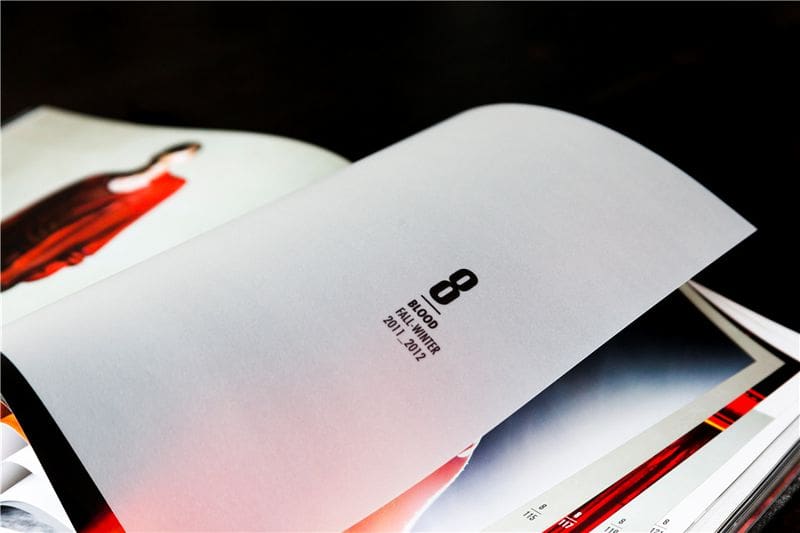
As one of the invited contributors, Eugene Rabkin (see “C”) wrote an article in the book mainly discussing Saberi’s protest aesthetic.
“When Saberi invited me to write for his monograph, I was not only honored but also excited. There is nothing that gives me the opportunity to systematically define my views on someone else’s work more than writing. This task was not easy because our love for creation is often hard to describe in words.”
The copies, fresh from the printing press, were sent to Saberi’s studio for the final step: artisans attached Boris Bidjan Saberi’s signature laces (see “N”) to the books as bookmarks, a practical yet unique detail. Of course, this detail was removed in later editions, so the first edition is now something to be cherished.
G:Germans

In Germany, which is famous for its industry, scientific and technological research institutions with leading technology and a well-developed education system support the country’s scientific and economic development. Born in Munich, Boris Bidjan Saberi has half German blood (see “K”), inheriting the German attitude of being born rigorous and loving challenges, which makes his work full of German-like “electronic experimentation”, especially during the time he was stationed in Paris. The fall/winter 12 season was even more so, with a temporary curiosity-seeking topic of work – the collaboration with the French sunglasses brand Linda Farrow to launch metal blindfold sunglasses, inspired by a whole piece of board with a slit in the middle of the traditional Eskimo sunglasses traditional sunglasses, which fully expresses Saberi’s experimental thinking and obviously has an ideological gap with Carol Christian Poell and others.
After the transformation, Saberi has frequently taken Germany as his inspiration, such as exploring architectural structures in the Ottoman Empire and the symbolic architectural heritage of Topkapi to achieve more exquisite tailoring for the 14 fall/winter season; the 15 fall/winter season “Heimat” (German for “hometown”), inspired by the German Wehrmacht uniforms and traditional Bavarian cultural attire in Munich, is also a sufficient indication of Saberi’s deep love for this homeland.
As a teenager, Saberi listened to East Coast hip-hop and skated through the rugged streets of the outskirts of Traunstein, Bavaria (see “J”). Saberi, who has repeatedly mentioned the influence of German culture on him, is happy to collaborate with local brands or distributors, whether it is the main line or the sub-line. If the collaboration with Linda Farrow embodies “modern industry,” then the sterling silver aviator sunglasses from the 16 fall/winter season, which were created in collaboration with German silversmith Werkstatt Munchen, represent “traditional craftsmanship.” The famous German buying house Darkland is always the first to put its new season’s clothing on the shelves, even in advance, while maintaining a long-term collaboration. As for the sub-line 11 by BBS, German outdoor brands such as Ortlieb and Seil Marschall are frequent collaborators.
H:Hand-Made
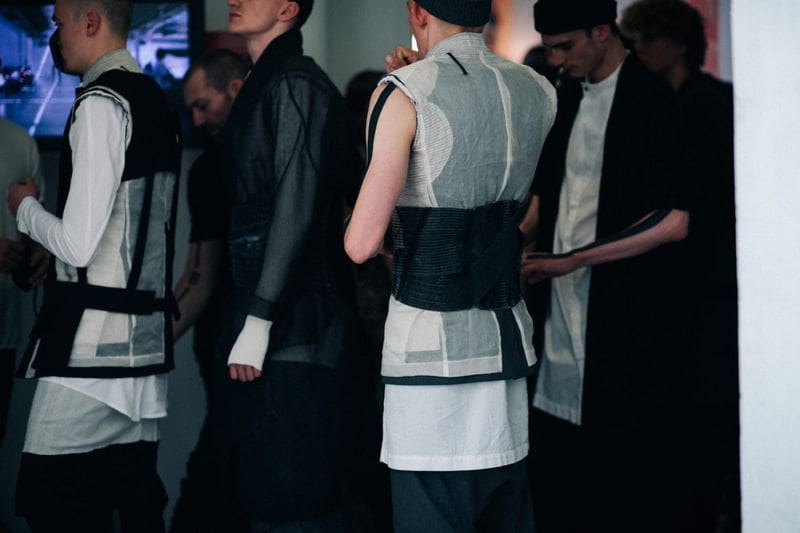
Even though one of Boris Bidjan Saberi’s signature elements is his meticulous attention to handcrafted details, as a brand that spans both the main and sub-lines across different markets and maintains collaborations with numerous well-known retailers, the brand is no longer a small handcrafted workshop.
When asked how to balance commercial development with staying true to his roots, Saberi responded: “I cannot compromise. If you look at my clothes, there are many handcrafted details, not because someone told me this or that is better, but because we believe it’s the best way. At the beginning, I didn’t have manufacturers in Spain because the fast fashion represented by Inditex Group had basically destroyed the local textile industry’s handcrafted business, so I had to create a dedicated production team for myself… Our business will never get too big, we can’t, and we won’t do that. We enjoy it and will continue to grow in an organic and healthy way.”
As a perfectionist who pays great attention to detail, Saberi’s handmade creations require time, while maintaining a balance with the delivery times for retailers. For niche designer brands that rely on handmade production, taking time to appreciate the details in showrooms and boutiques is the most fitting way to showcase the garments, rather than a runway show that lasts under 10 minutes. Among this group, Saberi is perhaps the most consistent in holding shows.
Unlike most designers who try to show the “best side” of their clothing, there is a unique feature in Boris Bidjan Saberi’s runway shows he often wears the clothes inside out to highlight the internal stitching, patchwork, and other handmade details. Saberi himself does not mind showing the flaws in the handcrafted pieces, as it represents the effort put into the creation.
“I look forward to seeing handicrafts. I want to see that you know you’re restricted, but you’re still trying to push the boundaries.”
At the same time, he also teaches his team many handicraft skills that might otherwise be lost, even for time-consuming and labor-intensive small items.
If you haven’t tried it yet, feel free to turn your Boris Bidjan Saberi garments inside out and pair them in a different way—it adds a unique touch. (For more details, see Boris Bidjan Saberi’s incomplete styling tricks.)
I:Islam
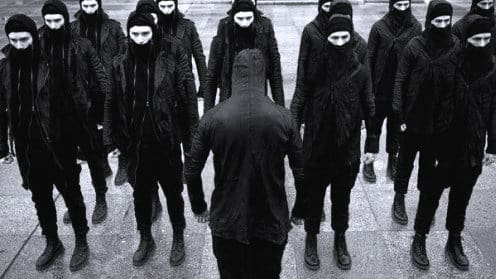
Even though Saberi is not a follower of Islam, the Persian culture and Islamic influences present in his early works are deeply intertwined, and the brand’s loyal followers exhibit a level of devotion similar to that of “Muslims.” The nomadic tribes in black, white, and gray tones were vividly represented in the Fall/Winter 2009 collection. This connection can be traced back to his Persian heritage.
Saberi posts his seasonal mood boards on his Tumblr account. From the images, you can clearly sense an Islamic, and even ISIS-like, atmosphere.
The Nazi uniform from World War II attracted many young people to join. If ISIS were entirely Boris Bidjan Saberi, it could be compared to Nazism, as design’s influence on the brain and thoughts is often such (In reality, Saberi would be a sworn enemy of ISIS if he were Muslim, as he would follow the Shiite sect).
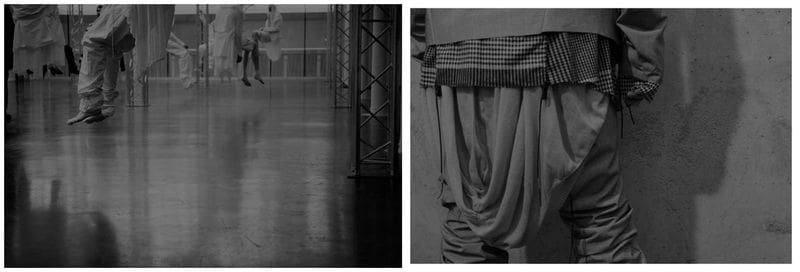
“My never-ending story is the part of me that is Persian. It is the most unknown part of me, and I long to find answers to all the questions about myself. My life is constantly searching for new inventions and experiments; I can’t stop.”
In his early attempts and explorations, Saberi established his unique streetwear and nomadic foundation with an abundance of natural fabrics that wrap the body and various innovative processing methods. However, in the Fall/Winter 2009 collection, overly emphasizing the Persian nomadic aspect of his identity earned applause from loyal supporters but limited the brand’s appeal to a wider audience. The scale was set too wide, and not everyone could appreciate or have the courage to pull off the looks in the Lookbook.
Later, during the Paris show, Saberi toned it down significantly, and another style label—“electronic experimentation” (see “G”)—began to emerge more clearly, showcasing more exploration of leather treatments and new materials compared to the earlier collections.
J: J-Dilla
(Detroit Hip-Hop music producer)
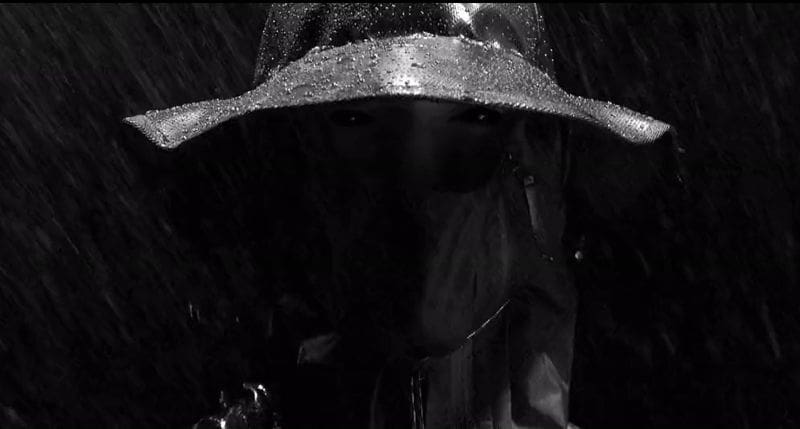
The introduction to J-Dilla can be found in detail on Baidu Encyclopedia, but how much influence did he have on Boris Bidjan Saberi?
In the debut 08 spring/summer collection, five out of six of the background tracks were produced by J-Dilla (see the tracklist Divide Boris Bidjan Saberi’s Kingdom “Show Background Music” and album tracklist images on his Tumblr). In the first official promotional video for 11 by BBS, the background track “One Eleven” is still from J-Dilla’s final album “Donuts.” Even in the 14 spring/summer video shoot, there was a moment where a hat displayed J-Dilla’s logo.
“One of the most outstanding producers in the world of Hip-Hop. A person who has always stuck to his style and understanding of music. A crazy enthusiast of Hip-Hop.” This evaluation of J-Dilla also fits Saberi perfectly.

From a broader perspective, we can derive a fundamental question—how significant is the influence of East Coast Rap, or Hip-Hop, on Saberi?
In multiple interviews, when asked “What have you been listening to lately?”, Saberi’s answers have included rap artists like Mobb Deep, Odissee, and Glue.
In SZ-MIX, Saberi recommended 10 tracks he listened to during his youth while skateboarding (for more details, see the playlist SZ MIX – BORIS BIDJAN SABERI, though J-Dilla is absent since Dilla was still working behind the scenes around 1995). All the rap in this mix is from East Coast artists, and even in the rap-heavy background music during fashion shows, familiar East Coast melodies, such as those from Mobb Deep and Wu-Tang Clan, are often present.
When Saberi opened his New York store, he invited legendary East Coast DJ Pete Rock, who had a significant influence on him in his youth, to perform. Saberi expressed, “I can’t imagine that one day I would meet him in such a real way.”
This clearly shows his preference for East Coast Hip-Hop (Detroit is part of the East Coast).
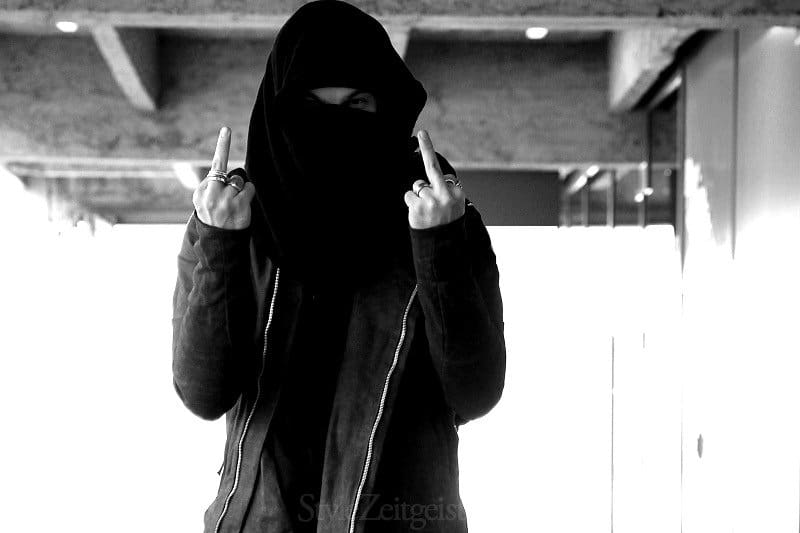
Actually, Saberi’s first visual encounter with subculture was punk. At the age of six, while walking with his parents, he encountered street punks, which sparked his interest in appearance. On the streets of Munich at that time, their style was so authentic and captivating, but it was Hip-Hop that eventually drove him forward.
Unlike Rick Owens’ rock-inspired decadent rebelliousness (see the Rick Owens BGM in runway playlist) or the pre-transformation Julius_7’s punk-like “old romanticism,” Saberi’s designs, nurtured by Hip-Hop culture, have a bold, free-spirited vibe.
“Hip-Hop isn’t about showing off like P. Diddy sitting in a Range Rover; it’s about people coming together to accomplish something, like a gang walking down the street speaking the same language. I love the feeling of making decisions—when a bunch of guys wandering around the streets suddenly say, ‘Hey, let’s do something big!’ I want you to be a skateboarder, a hip-hop guy, even an angry street thug. I want to keep the vitality of those traditions alive.”
In an interview with Nabil Azadi, he described his visual connection to Hip-Hop:
“I wander through my own memories, searching for the past versions of myself, and I put them all together. I feel like that feeling is fading away, but this is a revolution. I need to think of new machinery and new materials that won’t disappear, because invention and experimentation continue. It’s like I’m addicted, like I’ve taken something that keeps me going.”
K: Kinship (Bloodline)

Saberi’s parents were both involved in the fashion industry: his Persian father was a manufacturer, and his German mother was a designer. Together, they ran a small brand and introduced Saberi to the fashion world. The cultures of Persia, Germany, and his long-term residence in Spain are all ever-present in Saberi’s work. Thanks to this unique heritage, the extreme loyalty of Islam and the radical nature of Germany combine in a way that is difficult to grasp.
He invited London-based tattoo artist Maxime Buchi to create a tattoo for him, using his brand logo as an element, symbolizing ‘my design comes from my beliefs.’ The two dates on his chest correspond to his parents’ birthdays, reflecting his deep regard for his kinship.
Regarding the influence of his eclectic life background, Saberi acknowledges it but also has reservations: ‘I think this applies to everyone. However, I’m not sure it brings a lot of things that need to be clearly defined. I do have a deep connection to my background, and my roots continue to influence what I do. Everything I do comes from who I am… In the end, be yourself and shape your personal vision. I choose to express who I am through fashion design, and I’m satisfied with that. My life in Spain is the same. Because this culture and the local people bring freedom and authenticity to me every day.
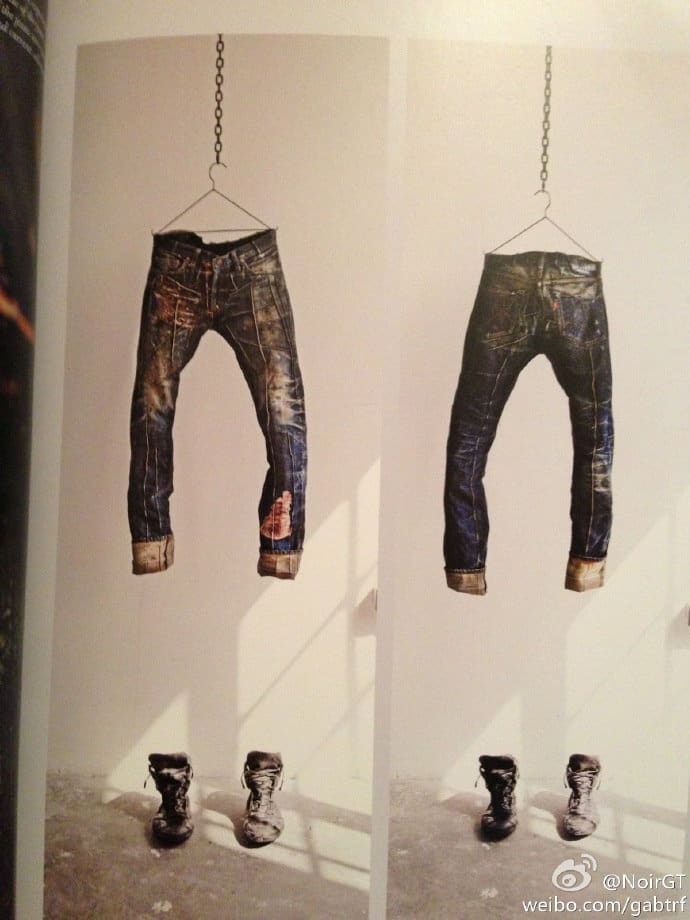
Saberi inherited production, materials, and handcraft resources from his father, while his mother passed down a sensitivity to aesthetics.
He places great importance on clothing and was often dissatisfied with the clothes he bought. His father’s sewing machine sparked his desire to make clothes—he often modified Levi’s jeans and military uniforms for personal wear and held his first fashion show in 1996. The frequent visits of Iranian people wearing headscarves at his home ignited his interest in camouflage and facial coverings.
The Fall/Winter 2011 “Blood” collection was dedicated to his mother, as she inspired him in many ways, such as how to properly arrange his scarves. She advised that they should be arranged thoughtfully and reasonably, as a good arrangement can create a beautiful effect, even if simple. In a later interview, he said, “My mother passed away last year, and I wanted to take some blood to symbolize her death. I don’t understand why I have such curiosity about blood and death.” Perhaps, this is the bond of blood kinship.
L: Lots Of Collaboration

Saberi has always been cautious about collaborations between brands, carefully selecting partners, and does not wish to reveal too many details. “I’m not trying to be mysterious, but I also don’t want to be seen as someone who only cares about making money. It’s about finding the right balance in how you showcase your work. I don’t do many interviews because I find those who are only interested in the designer’s fame disgusting.”
Over the years, Saberi has collaborated with many entities. In addition to those mentioned in the “G” section, he has launched limited-edition items for fashion media like Some/Things, Stylezeitgeist, and boutiques such as Atelier. The collaboration with Reebok and its subline was especially prominent — the Insta Pump Fury made a huge impact. It coincided with the 20th anniversary of the Pump Fury, and Saberi’s color schemes gave it the perfect timing and location. As soon as it launched, it sold out quickly, and the subline’s popularity also boosted the main line’s recognition. “From the beginning of our collaboration with Reebok, we aimed to find the best way to combine professional technology with high-quality garment production. The Pump Fury is one of Reebok’s most iconic models, and this collaboration perfectly merged Reebok’s expertise in sneakers with our core creativity.
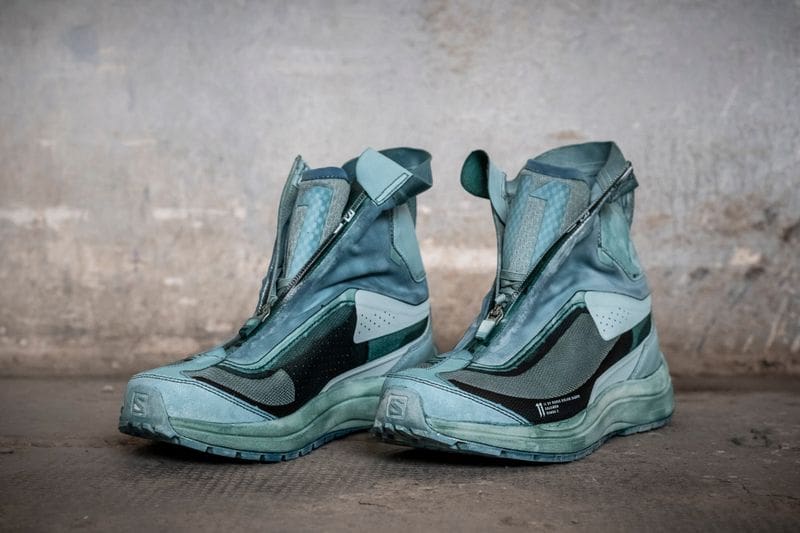
The collaboration between the French outdoor brand Salomon and the subline has now entered its third year. So far, five Bamba models, two Boots, one mainline cleat, and one Slip-on have been released.
These shoes are often dyed with vegetable tanning in different colors to match Saberi’s seasonal themes. Among them, the Bamba 2 has been the most popular in the market. (Although it’s not part of the mainline, it has had a significant influence on the mainline and has appeared multiple times on the mainline runway, so it’s briefly mentioned here.)
And… Leather
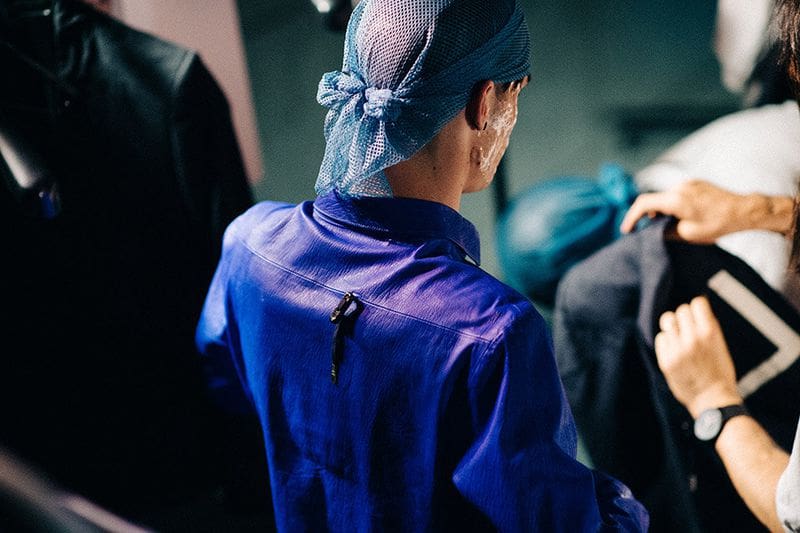
I have always been fascinated by leather; it’s a very interesting, never-ending material. It ages over time, depending on your lifestyle and how you wear it. It’s with you, and that’s the meaning of its name; your clothes will reflect your lifestyle.” Saberi enjoys locking himself in the factory, experimenting and reinterpreting materials like leather. He always works by hand, using substances like oil, sand, wax, or nails to treat them.
For example, he dyes fabric with mud, adds glycerin to leather to make it transparent, mixes linen and plastic, and glues aluminum foil under water buffalo leather to create garments or accessories that can deform to fit the body. If you have personally experienced Saberi’s leather jackets and felt the details, you will know they are definitely worth wearing.
M: Munoz Vrandecic
(Spanish leather brand)
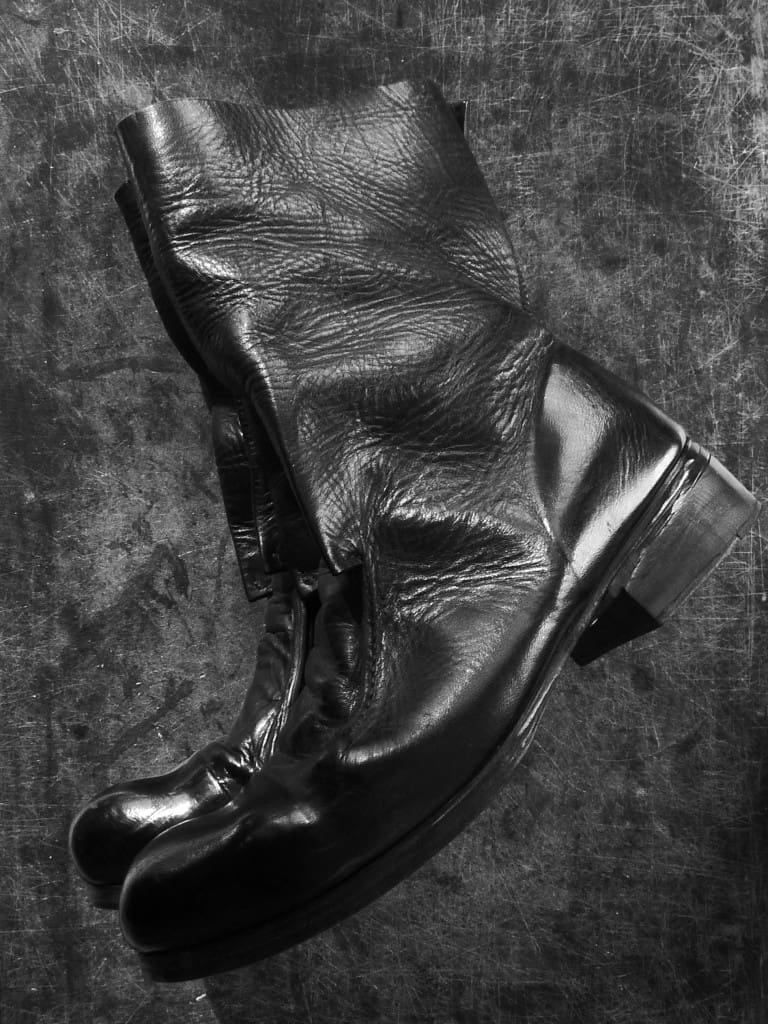
In 2003-04, after witnessing the impressive leather shoes from the Barcelona-based artisan Miguel Munoz Wilson’s brand Munoz Vrandecic, Saberi had the desire to collaborate with him. However, Munoz at the time was “unwilling to be influenced by other peers” and had no intention of collaborating.
Ten years later, they teamed up to launch a high-top handcrafted leather boot, which appeared in the SS15 runway show. In an interview, Saberi said: “At first, I found it strange, but now I understand his decision better. We are both sensitive people, protecting our inner selves by maintaining our work. I also think that, in this niche handcrafted community, perhaps it’s better if designers don’t have too close a friendship… But I hope this collaboration will be the start of a long-lasting friendship.”
Both of them listened to old-school rap, came from different countries, and shared mutual appreciation for each other’s creations, fashion, life, and music ideas, feeling like soulmates, much like the bond between Bo Ya and Zi Qi. “If you can’t do the best yourself, find someone who can… He’s a master in the field of shoemaking, so he can bring my ideas to life. I provide the design ideas, and he creates the first pair of samples, improving them through discussion. His stitching, vegetable-tanned cowhide soles, sawing, and welding techniques, along with my vegetable-tanned horsehide leather; his unique handcrafted process combined with my aesthetic. We each brought our strengths, collaborating seamlessly.” (Unlike in the “L” section, this is a perfect collaboration between two artisans, so it is highlighted separately.)
N:No Advertising
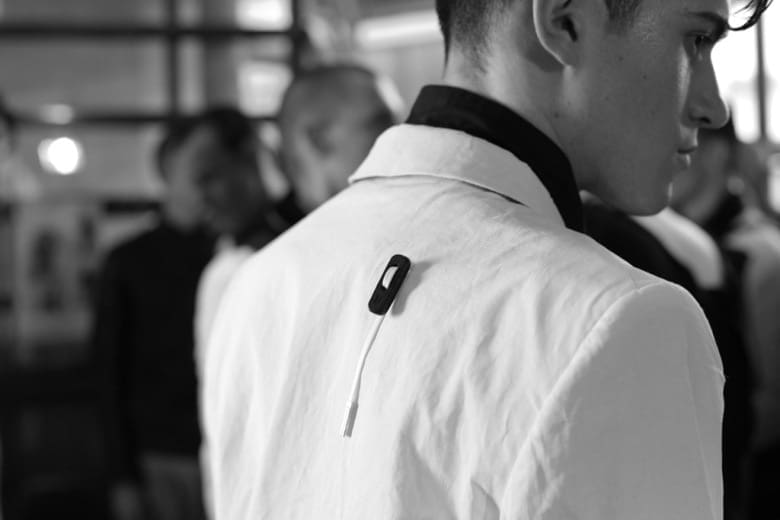
For the main line, Saberi does not use traditional advertising strategies, nor is carefully planned commercial promotion part of his approach. Unlike most major brands, who each have at least one Instagram account (even Carol Christian Poell has one), Saberi remains low-key with only a Tumblr account that has long been inactive. This fits with his image of being deeply focused on craftsmanship and research. On the other hand, his subline is much more active on Instagram, a highly productive video-sharing platform.
Saberi has a hidden promotional strategy—his signature lacing, which evolved from the early short strap decoration on Damir Doma’s backs. The laces feature 925 sterling silver tips and leather fasteners, adjustable in length. They are both highly recognizable and aesthetically pleasing. The collar label and wash label are incorporated into the laces, making them more comfortable to wear while not merely decorative. Through the adjustable length, the excess part of the laces can hang from a hook, with the leather fastener used for fixation. This detail perfectly combines beauty and practicality, serving as a perfect finishing touch (11 by BBS replaces the lace detail with heat-sealed tubing, exposing the large wash label, giving it a more street-casual vibe).
When wearing Boris Bidjan Saberi’s clothes on the street, it’s hard not to notice the lacing (which you should be familiar with), making it a clever large-scale “moving advertisement.”
And… NYC (New York City)
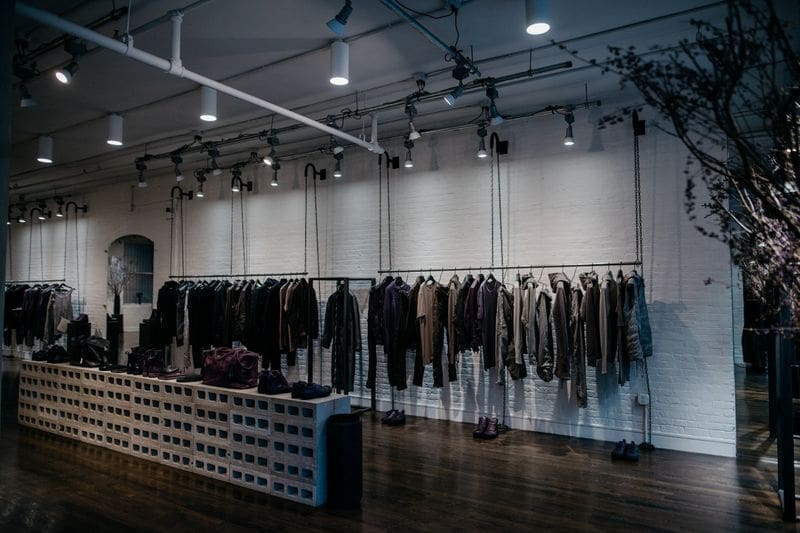
The avant-garde boutique Atelier once had the largest agency for the Saberi brand in New York, helping establish its name locally and cultivating a loyal customer base for BBS ready-to-wear. Given this, after Atelier stopped its agency, Saberi decided to fill this gap for the thousands of devoted fans, and it is not surprising that he chose New York, the birthplace of Hip-Hop, to open his first flagship store.
The two flagship stores each have their own roles: the Barcelona flagship is located in a suburban area not suitable for retail and only accepts appointments to avoid casual passersby knocking on the door. Due to the almost nonexistent local foot traffic, the website does not display the detailed address, relying solely on word-of-mouth from boutiques around the world. At least 80% of visitors are from foreign countries, including many customers from China who have traveled a long way.
The fashion environment in Barcelona is modest compared to other major cities, so the flagship store functions more as an experimental archive of Saberi’s work, offering more freedom. The New York flagship, with its wooden floors and white walls, does not have the intense Saberi aesthetic found in Barcelona. From the choice of location (494 Greenwich Street, New York) to the details inside, including the basement transformed into the flagship store for the sub-line 11, everything is designed to offer a better commercial shopping experience.
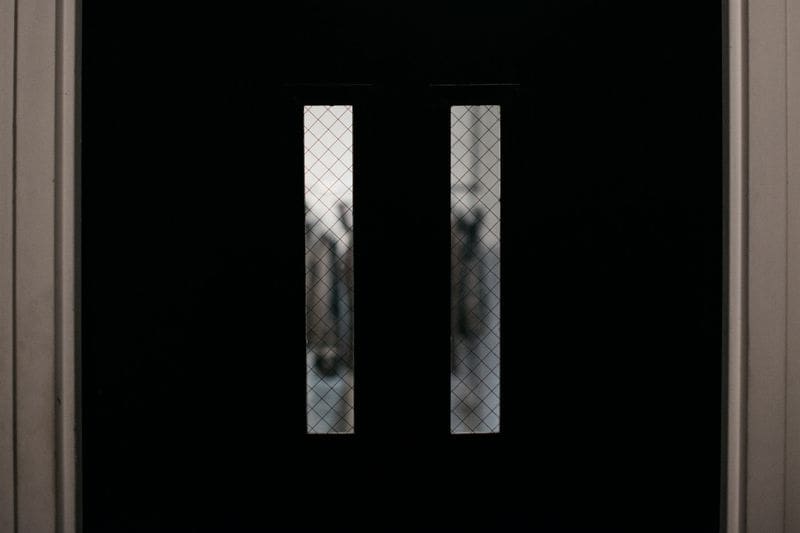
Niche designer brands often choose the traditional retailer agency model due to a focus on design, lack of time for operations, limited operational costs, or promotional resources. Only a few choose to open brand flagship stores.
Regarding this, Saberi stated, “Since we do not have online sales, it’s very important to have this physical interaction with customers. I simply do not believe in the internet. I think you should try our clothes in person and really feel them (I remember the Island Chicken Soup King said something similar). But who knows what will happen in the future.”
Now, the basement of the New York flagship store has closed, and the NYC flagship store has been removed from the official website, appearing as an independent e-commerce site. It’s truly a thought-provoking development.
O:Opera
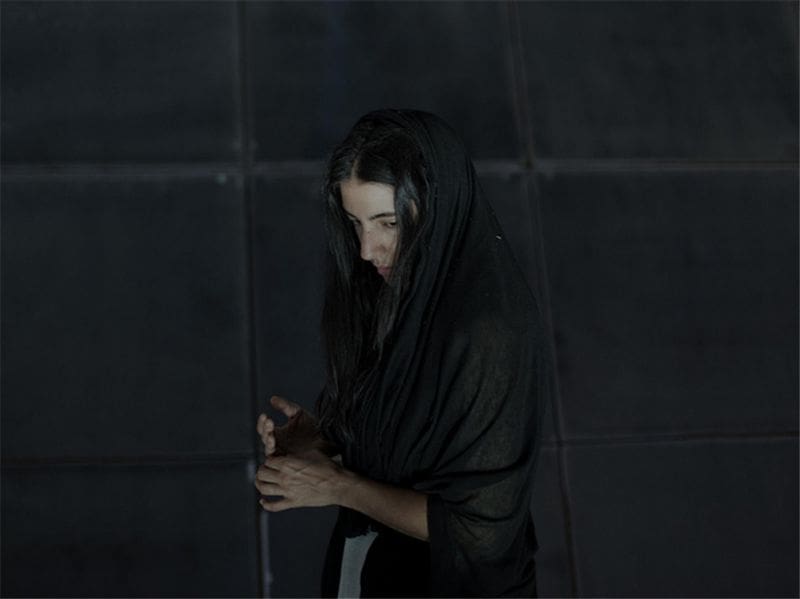
Saberi previously designed the costumes for Icelandic electronic musician Ben Frost’s opera The Wasp Factory at the HAU Opera House in Berlin in 2014. The two also met in a dramatic way; a few years ago, Ben Frost sent Saberi an email expressing his love for his work and saying if he would be interested in hearing his own music. It was then that Saberi was blown away by his music (because of this, the soundtrack for the Fall/Winter 12 season came from Ben Frost, who has subsequently DJ’d Saberi’s shows several times, and whose dark, experimental music complements Saberi’s work).
“We met in Barcelona and “fell in love” or maybe it was just wishful thinking on my part. He’s an amazing man and I admire him… Then he asked me for my opinion on the costumes for ‘The Wasp Factory’ and I said why not (let me do it)?” Saberi is full of praise when it comes to this “dreamboat”.
“Ben Frost fits perfectly with the values behind Boris Bidjan Saberi. He’s creative, he’s crazy, he’s constantly building his life. He’s been molding matter from scratch. Yes, it’s very Boris Bidjan Saberi. “The opera’s self-titled album was released in 2016 for those interested.
P:Perfume
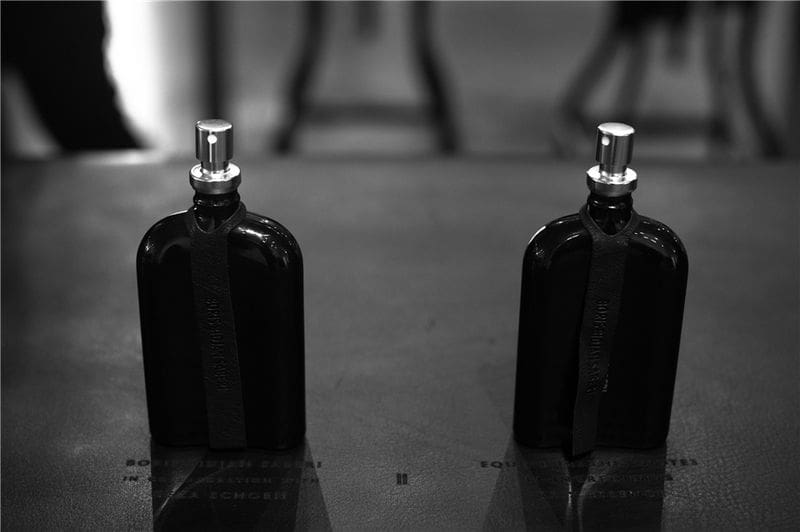
In September 2016, Boris Bidjan Saberi collaborated with Berlin-based perfume house Geza Schoen in order to officially launch the brand’s first fragrance, which unsurprisingly was inspired by the same scented candle set as the one he launched with French perfume house Mad et Len 15 years ago: the scent from vegetable tanned horsehide.
Saberi wants each product to reflect his identity as a designer and artisan, so his fragrances reflect the feeling of his daily work: raw materials such as hides, waxes, oils and glues mix with the smell of his body in the studio. Instead of the strong and industrial scent one might expect, the fragrance, made from 11 fragrances (based on Geza Schoen’s existing MOLECULE 01 and 10 different scents), is soft and fresh, with a top note of freshly cut grass in the morning, followed by the scent of wax and glue that slowly dissipates.
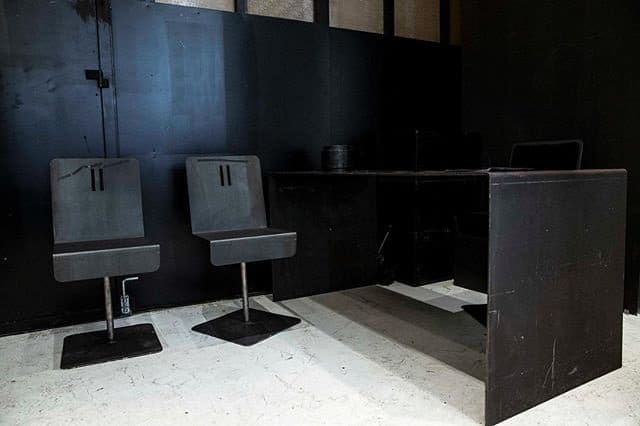
At the end of November, Boris Bidjan Saberi and Russian distributor Project 3.14 hosted the official launch of the fragrance in Moscow.
In an interview Saberi said that he was “completely addicted to the fragrance”, while on the subject of launching lifestyle peripherals such as furniture, “The lifestyle conveyed by the brand is a reflection of the cultural and social values that my team and I believe in. The furniture I was working on eight years ago and you can see them in the Showroom and the studio, but these will not be for sale.”
Q:Question
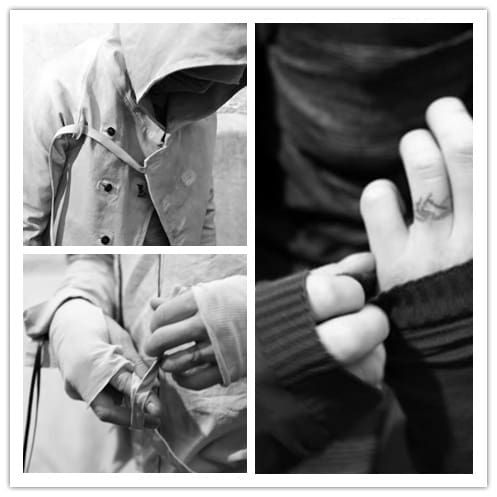
The SS13 season was an eye-popping one at the time: it was too elegant, too restrained, a far cry from the street casualness of earlier seasons, more like mainstream Prada, Givenchy.
“Saberi actually made polo shirts…” Saberi said in a post-show interview, “I was inspired by the Italian mafia this season… I made the clothes more serious and serious. I made the clothes more serious and classic… A real man has a closet where he wears jeans, suits, gardardein robes (a kind of jacket), polo shirts. I completely destroyed and changed them.”
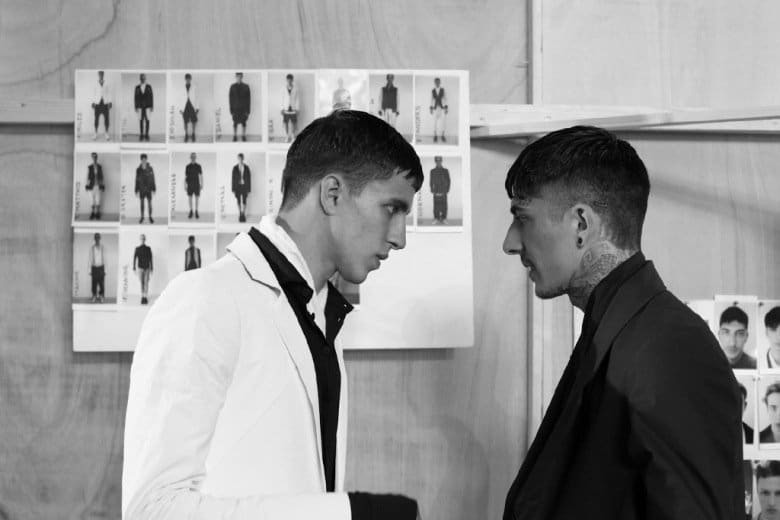
In fact, his dedication to craftsmanship and exploration of handiwork remains unchanged, otherwise there would be no need to massively wear the jackets inside out to show off the inner details of the garments, which is a sign of confidence in his work. Subsequently, a number of voices said, “This suits me better than the Persian-flavored Saberi of the past”.
Saberi can’t hide her excitement at the positive feedback from her followers who understand her new direction: “I feel calm, but also excited. This season means a lot to me because it’s not like before. It’s a new approach, a new Boris Bidjan Saberi style, more mature and competent.”
Hardly emphasizing the fact that he doesn’t have the support of the group behind him, perhaps he’s also trying to make it clear that the transition was largely his own idea. But there’s no denying that this season was the beginning of the transformation of Saberi’s style, and that all the seasons of the following seven years have been based on this “classicism”, with a strong and intuitive Persian flavor that is no longer to be found.
R:Representative
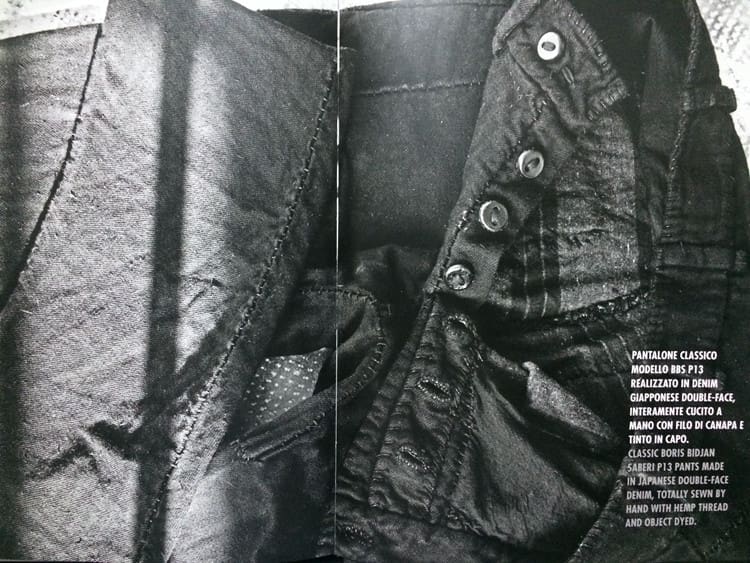
“You don’t have to create a pant style, but you can create an aesthetic.”
Having said that, if we had to choose one piece, or even a model, that could be Boris Bidjan Saberi’s iconic and accessible statement piece, it wouldn’t be the asphalt leather jacket “J” that was the star of the launch or the event, or the pair of “moldy” flats that were part of his culturally diverse aesthetic. It’s not the “moldy” flats that united his culturally diverse aesthetic, but the P13, Saberi’s perennial favorite and staple pant.
Saberi’s first hand-sewn pant, it’s rich in detailing and pleat stacking, but it’s also a “jack of all trades” in terms of wearability. p13 is like a blank canvas board, which Saberi paints and dyes for a seasonal theme, “I love my pants because they fit, you walk around and they’re a little bit different. fit well and you feel it when you walk …… Now I want to refine the design further.” Arguably the brand’s must-have style. As a secondary line, 11 by BBS naturally does not abandon this version (simplified from the main line version to facilitate industrialized mass production, model P1), and the price is also very beautiful than the main line.
S: Skateboard
(skateboarding, including snowboarding)
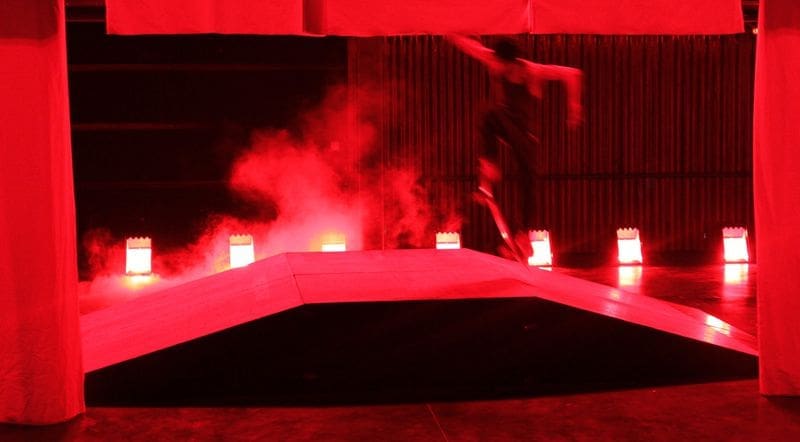
Skateboarding has been Saberi’s favorite sport since he was 12 years old, and he has also worked in a skate store as a salesman. In addition to the gangsta of Rap, there’s also the freedom of skateboarding in his design work, and he even had a skateboarding party at his Fall/Winter ’11 show – professional skateboarders in the background did tricks (albeit with mistakes due to the slippery conditions of the venue) as the models walked down the runway.
“In each season, I have a detail that represents my cultural background, which has a big impact on what I do. For the men’s collection, it’s obviously a cultural art. I like to give life to a runway show by presenting it in the right ambience.” He also has pieces like the skateboard-type backpacks for Fall/Winter 12. To this day, he often skateboards outside his studio.

Saberi also plays with climbing and snowboarding, and even collaborated with Salomon on a black-and-white ski for FW18: made from the twill fabric of the ace pant model P13, it’s been dyed and brushed with vinyl and then pressed onto a skateboard.
T:Team
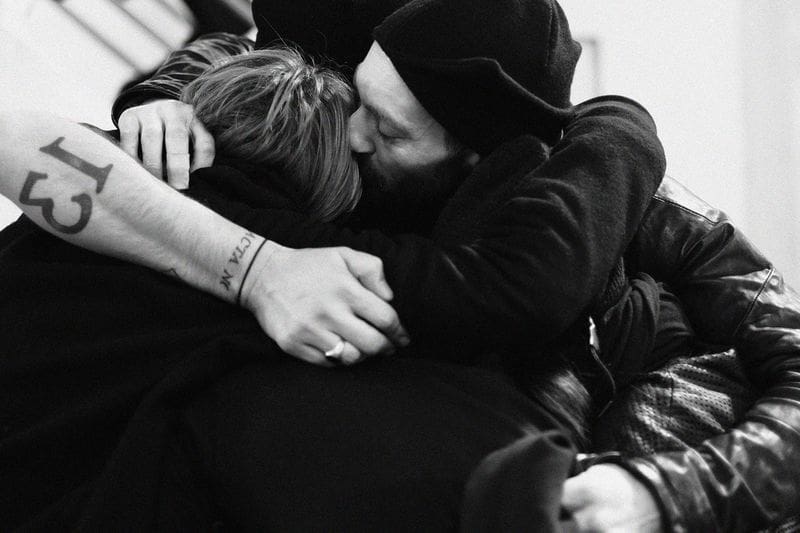
Saberi is used to working alone when it comes to design. He says that design concepts come from his own thinking, even with the help of assistants and interns, but that’s in terms of industry and production, and that he does the initial process from concept to prototype, such as washing and destroying the leather, on his own, and can’t wait to see the finished product, and so can’t wait to explain his ideas to others.
Saberi’s studio works closely with local manufacturers, “They give me the opportunity to use their machines, where I can play like a child in the garden. They have big washing machines where I can dye leather – I can do anything.”
Saberi is unabashed in his praise for the team, which consists of himself, the studio, and the producers, “Every day when I see my team working around me with the same passion, I’m proud to have gathered this team.”
As well as… Trehoux (a model).
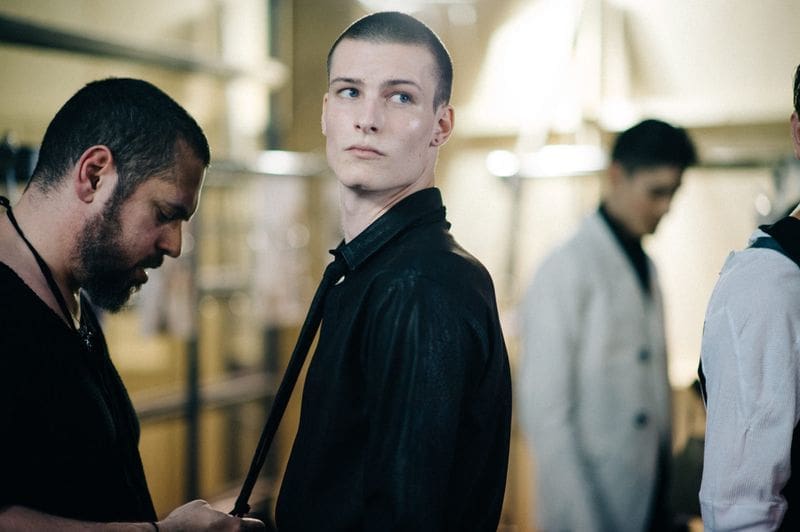
When Saberi finds some faces he likes that fit his brand’s ethos, he tries to keep them and they reappear in his shows and lookbooks over the seasons, which happens quite often.
German male model Cyril Trehoux is clearly one of those faces, as the familiar face of Boris Bidjan Saberi’s show, with a cool yet powerful facial profile, also covered in tattoos like Saberi. What makes him so impressive is his role as the only Model in the promos and lookbooks for the Spring/Summer 14 season that didn’t have a runway show, and he has his share of credit for the full house of the Spring/Summer 14 season, he really suits Boris Bidjan Saberi so well, even though he has had good rides in other brands’ shows, none of them stood out as much as he did on Saberi.
U: UCANFUCKW
(leather goods brand)
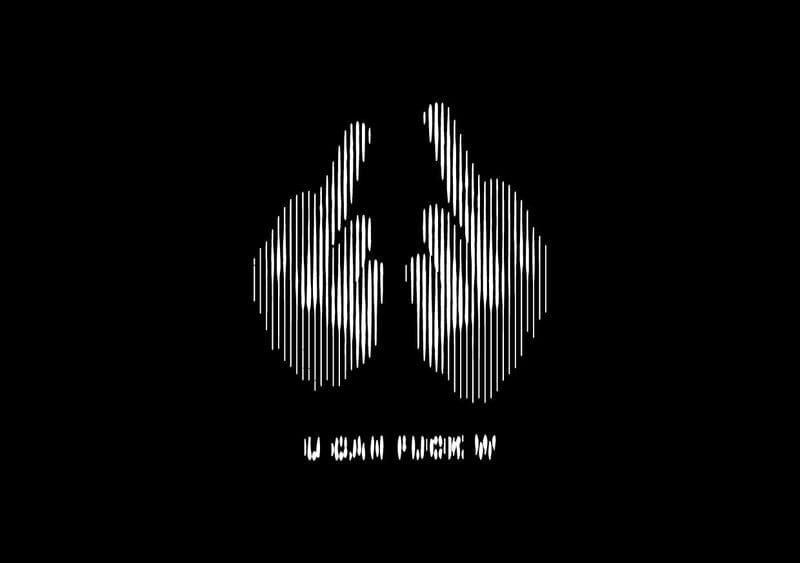
UCANFUCKW is a brand that Saberi founded during his studies in Spain in 2003-04. Often dismissed as a “nerd” by his classmates, he turned his studies into experiments with leather, designing and selling handmade leather accessories.
During this time he made two knitted and sewn bags, key rings, bracelets and necklaces, finished in silver and brass, and worked with natural materials: wax, different oils, water, sand and even sunlight. He soon began working with a manufacturer in Spain and started producing directly with various machines. He also met his future partner, Miguel Munoz Wilson (see “M”), a Barcelona-based artisan tanner. For 11 by BBS’s SS16 season, he used a print with two middle fingers and the word “UCANFUCKW” as a reminder of his youth.
V: Various Show
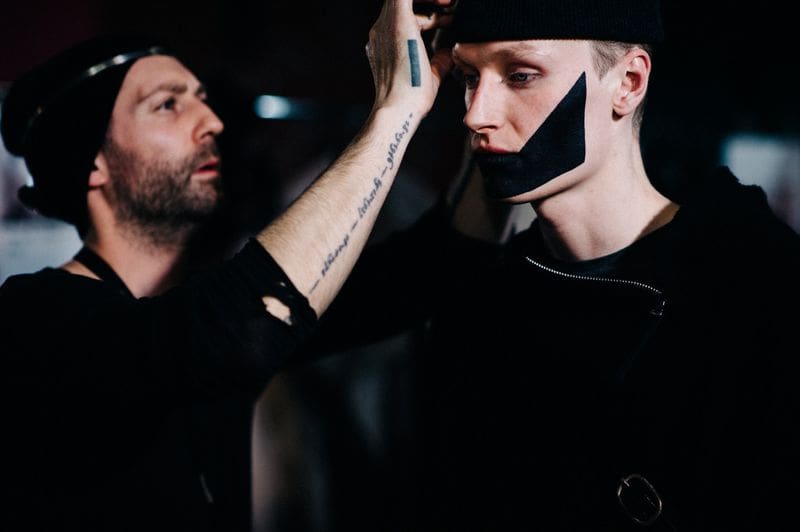
Saberi is constructing a universe of his own, populated by tribes who have adapted to survive in different extreme or harsh environments, and who have traveled great distances for their beliefs.
Saberi was once asked to describe this universe in one word, and his answer was – Impossible 😉
– “How can a man describe its universe in one unique word? And why should he do so? My world is complex, complete, evolving, and I don’t want to describe it, I don’t want to construct it in words. Its wholeness and complexity cannot be described from a lexical point of view; it is meaningless.” In his opinion, language is not its expression, clothing is. The showroom may not be the best place for him to present his work, but he still wants to express himself and show what he has achieved; and the fashion show is the only way to present the clothes in some kind of beautiful ornamental way.
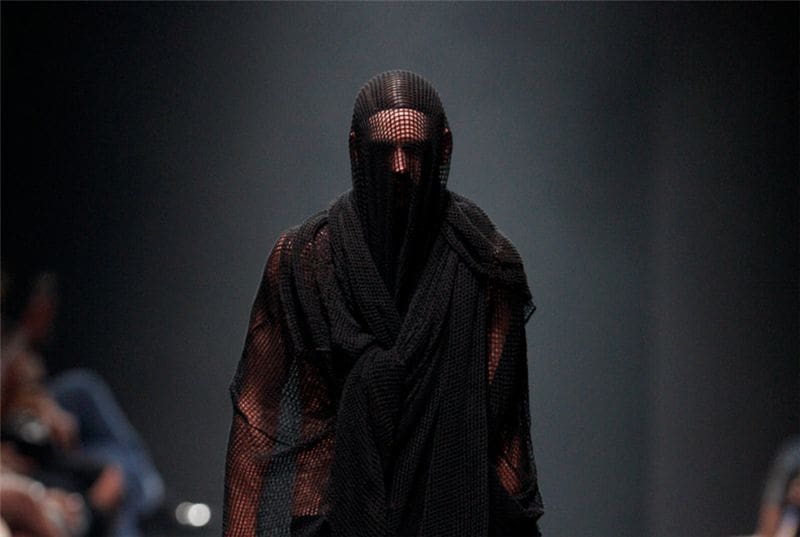
At Barcelona Fashion Week in summer 2007, under a series of beats by J-Dilla (see “J”), a show inspired by military camouflage netting, based on 3mm square holes structure of netting woven with leather and complemented by 925 silver and Swarovski crystals, called “NET The “3X3” runway show began with Boris Bidjan Saberi, a young man who came out to take the curtain call.
Like two style labels on opposite ends of the scale, “Persian Nomad” and “Electronic Experimentation”, Boris has been changing the angle and weight of his focus every season since the beginning of the brand, and the seasonality of the fashion shows has been as exciting to him as writing a new, strange and difficult story. The seasonal nature of the shows is as exciting to him as writing strange and difficult new stories, and aside from the inevitable pressures, it’s nice to be challenged to be creative in a limited amount of time. “Every six months I have to change my point of view slightly, I start each season from scratch, stretching from simple concepts and finally combining it with my aesthetic and style.” Some of the seasons have been characterized as “performance art,” with the clothes, looks, and props working together in such a way as to create an unmistakable street presence.
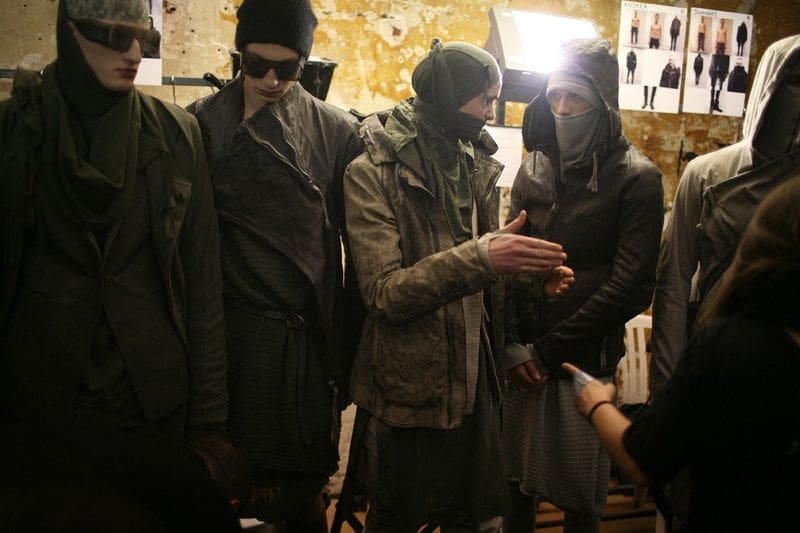
Twelve years on, today Saberi often shares the same stage or even the same day with his predecessors at Paris Fashion Week, such as Rick Owens and Julius_7, thanks to his dedication to creating a multicultural show experience that is as much about performance art as it is about excitement.
Whether it was the pre-transformation primitive Persia (SS08-AW09), projection set (SS10), Trojan Horse Hanger (AW10), skateboard party (AW11) and “dummy challenge” curtain call (AW12), or the post-transformation no-show attempts (SS14), Saberi-style land, sea, and air forces (AW15-AW16), he has been a part of the show since it was first staged. AW15-AW16) and Polar Survival Challenges (Desert Frenzy, Spring/Summer 17; Frozen Glacier, Fall/Winter 17; Deep Woods, Spring/Summer 18; Snowy Mountains, Fall/Winter 18; Dank Caves, Spring/Summer 19; Silk Road, Fall/Winter 19), it’s the “radicalism” of fashion.
W: Women Line
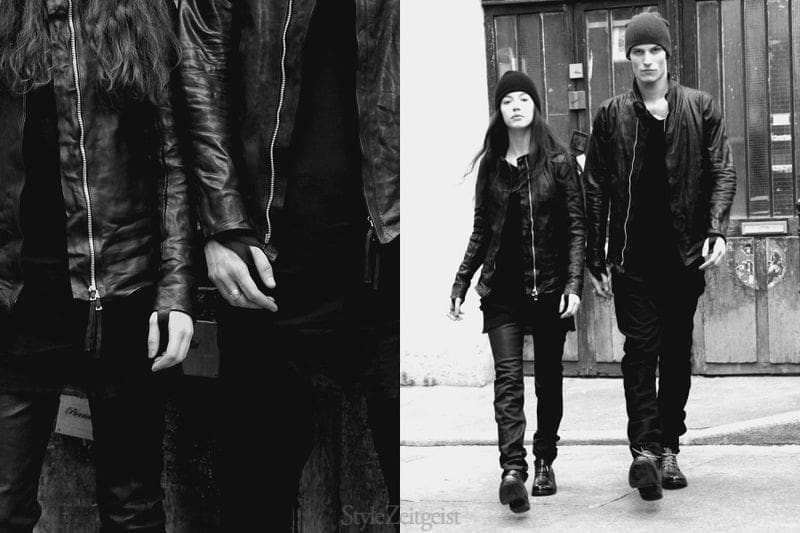
Although women’s models have always been available, Boris Bidjan Saberi has never officially launched a women’s line. In more than one interview, Saberi has made it clear that “our inspiration usually comes from art. I never have the idea of (distinguishing between) men or women. In the end, it’s all a reflection of my personal style.”
He tries on the clothes he makes himself to feel how they fit (so naturally there is no separate women’s collection), and believes that they are unisex. “My energy has always been focused on menswear, and I have to think about how to develop this. Women’s wear is not on the agenda for the time being. I know very well that if I start doing it, I have to put in 110% of my energy, and I won’t be able to handle it.” Although there are now a very small number of models with women’s versions, he says that more will be launched on the day he finds the right female muse.
As well as… Warrior&Samurai.

In 2012, perhaps through the matchmaking of Professor Fabriano Fabbri, who was writing a monograph, Saberi went to the University of Bologna to conduct a seminar called “The Samurai and The Warrior” with Issei Fujita, the designer of the Japanese pioneer brand Lumen et Unbra – obviously, Warrior refers to Saberi. Saberi, who has been exploring the functionality of clothing all the way, is indeed like a warrior. “I want to protect, (the clothes) are like armor, and I feel stronger. All that’s left is time, passion and experience.”
Of course, Saberi could also be described as a ‘samurai’ – traces of oriental culture can always be found in his design career. ‘This time my challenge was to find a new mood; it’s a small step forward in my work.’
Starting with the spring/summer 12 season, which drew inspiration from Japanese martial arts Aikido and Kendo, he has been refining his designs of kimonos, karate suits and gabardine robes fused into one. The autumn/winter 19 season, inspired by the ancient Silk Road, also features jackets of varying lengths and blazers and woolen coats with kimono collars, similar to traditional Japanese clothing.
The new pant styles P 19, P20, and P22, which have small ties, are also based on karate pants.
X: Xtreme (extreme limit)
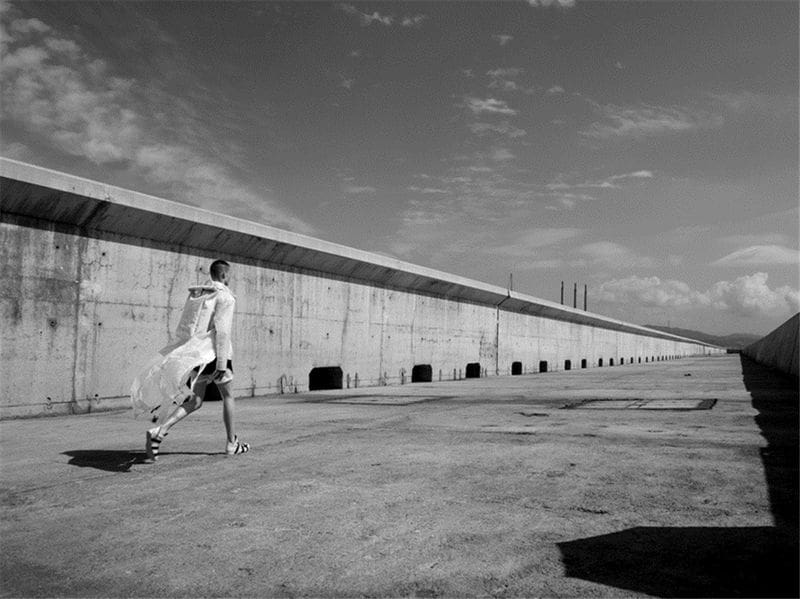
“My daily work is to explore the limits of clothing tailoring, constantly pursuing perfection and experimentation.” This is Saberi’s introduction to his work. Eugene Rabkin also commented, “When Saberi locks onto an idea, he pushes it to the limit.”
From the beginning of the transformation to the present day, spoofs such as “Boring Bidjan Saberi” and “Boris Boring Shit” targeting the abbreviation BBS have never stopped. Either continue to seek change in form, or continue to aim for a goal, Saberi chose the latter and “dances in shackles.”
The spring/summer 14 season can be seen as a ray of light after the “boring” 13 season. “In order to demonstrate the theme of Sailorism, numerous nautical elements were used: life vest-style vests, ship accessories, fishnets, a clever combination of recycled canvas and sailing shoes, and an aged bright yellow color like the work uniform of a seaman after long use. Even the fixed iron rings have natural patches of rust. At first glance, it is like smelling the salty smell mixed with the sea breeze. The ingenious application and professional yet unpretentious details, coupled with the perfect interpretation of the Model, give you the ambition and style of the great maritime era in just 1 minute and 4 seconds.”
To this day, Saberi has become very skilled (see ‘V’), and under the premise of unchanging craftsmanship, has found a balance between expressing oneself and compromising with popular tastes.
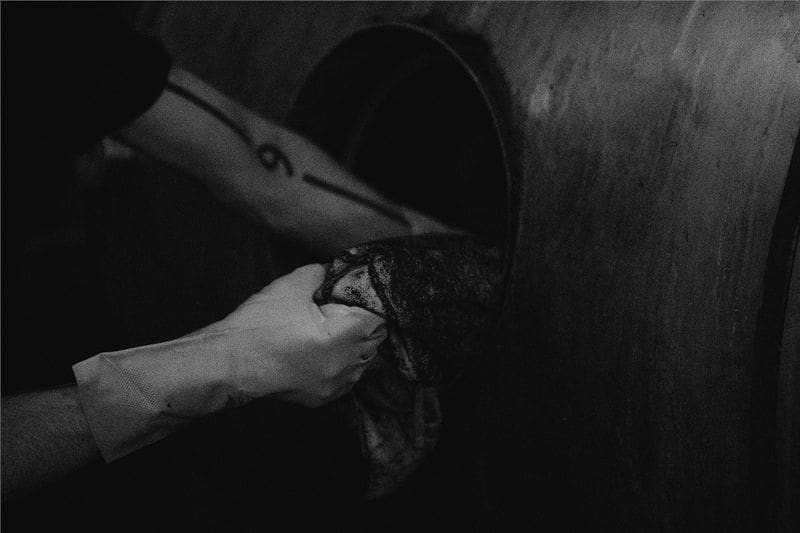
He has continued to develop the line in the transformed direction, and in the extremely familiar design form, he has become a “slow evolutionist”, inevitably leaving the impression of “repetition almost to the point of regression.”
The evolution of the design is complex and subtle, and even the choice of the seasonal accent color is not arbitrary. It is undeniable that the strength and depth he has injected into his clothing has made each season’s flagship products more refined and durable. The more flexible structure and details can fit more body shapes, although sometimes it is not immediately obvious – such as the gusset on the hem of the pants. Just like the iPhone, Apple’s greatest product, which is re-released every year with varying degrees of change, repeating itself like Saberi – so 11 years on, has the iPhone become Boring & Shit?
A group with limited resources may divert most of its resources to refining specific products rather than inventing new ones. Saberi is also refined, but is he not interested in new products? Even for a “slow evolutionist,” there is no mutual exclusiveness between frequently “shocking” and iterative designs. Saberi also has many difficult-to-implement design ideas, and he will try to push the limits.
Y: Yelp (a dog)
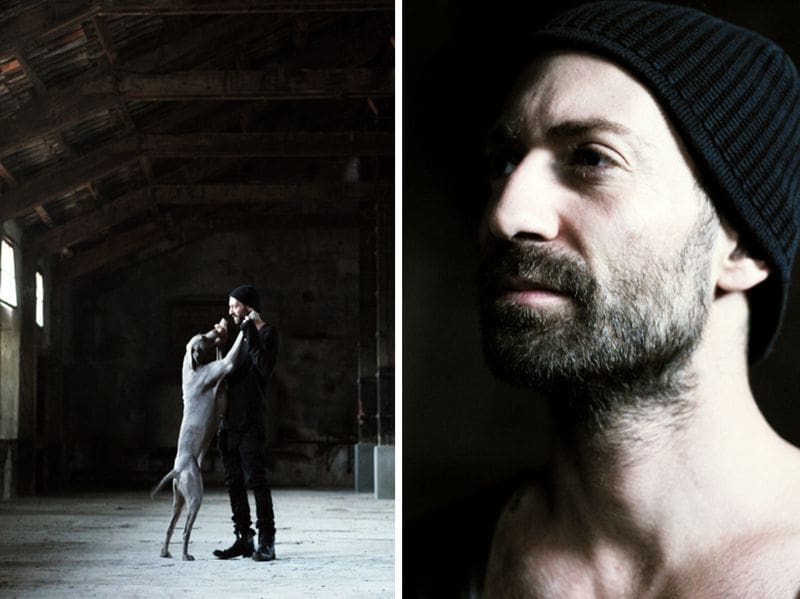
Many people have seen the Boris Bidjan Saberi photos published in Some/Things Magazine, but please don’t overlook the other protagonist Saberi’s grey dog, a Weimaraner to be precise. Saberi lives with his dog as a “poop shovel” and even brings him with him to work. Speaking of Saberi’s gentle eyes, I can only think of one word – “tough guy with a tender heart”. Of course, Saberi has never used an animal as inspiration or a theme before.
Z: 0 (Zero) – 11 (exhibition name)
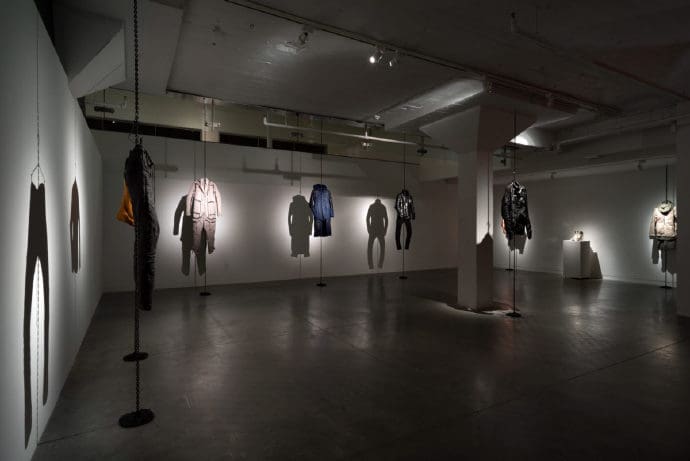
In April, Boris Bidjan Saberi held an exhibition called “0-11” at the Museum of Contemporary Art and Design (MCAD) in Raleigh, North Carolina, USA, displaying 11 works that exemplify his “craft maniac” label. Some of these works can still be worn, while others have been transformed into sculptures (such as the tar leather jacket). The exhibition ran until May 7th.
Although Saberi participated in the “Outer Dark” art exhibition in Frankfurt (Germany) several years ago, showcasing his sculptures (now on display at the flagship store at 494 Greenwich Street in New York), this is the first time he has entered a museum to fully display his culture and skills.
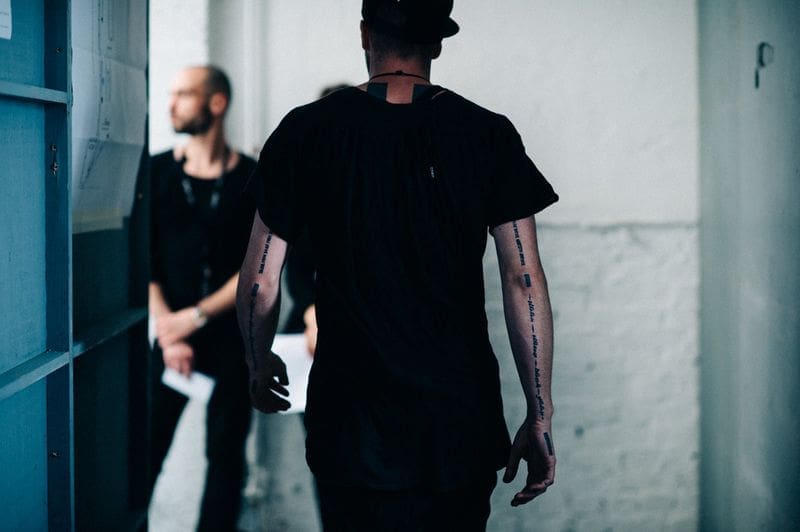
In the end,
let’s end with the last sentence of Saberi’s earliest interview that can be found:
…
“Remain rational about the world, be true to yourself,
and live life to the fullest.”
Source of pictures and interviews:
Boris Bidjan Saberi官方
11 by Boris Bidjan Saberi官方
LVL3
Sleek
DAZED
SZ-mag
Grailed
Hint mag
Le 21ème
Hypebeast
Zeit-Online
Le Paradox
Nowfashion
CMMN SNSS
Highsnobiety
WWD女装日报
Akenz Brands
Vogue Runway
Nasty Magazine
Achtung Digital
STYLEZEITGEIST
The Fashion Spot
Fashion Windows
MODESTNOBILITY
Adam Katz Sinding
Underscore Magazine
Anniversary-Magazine


